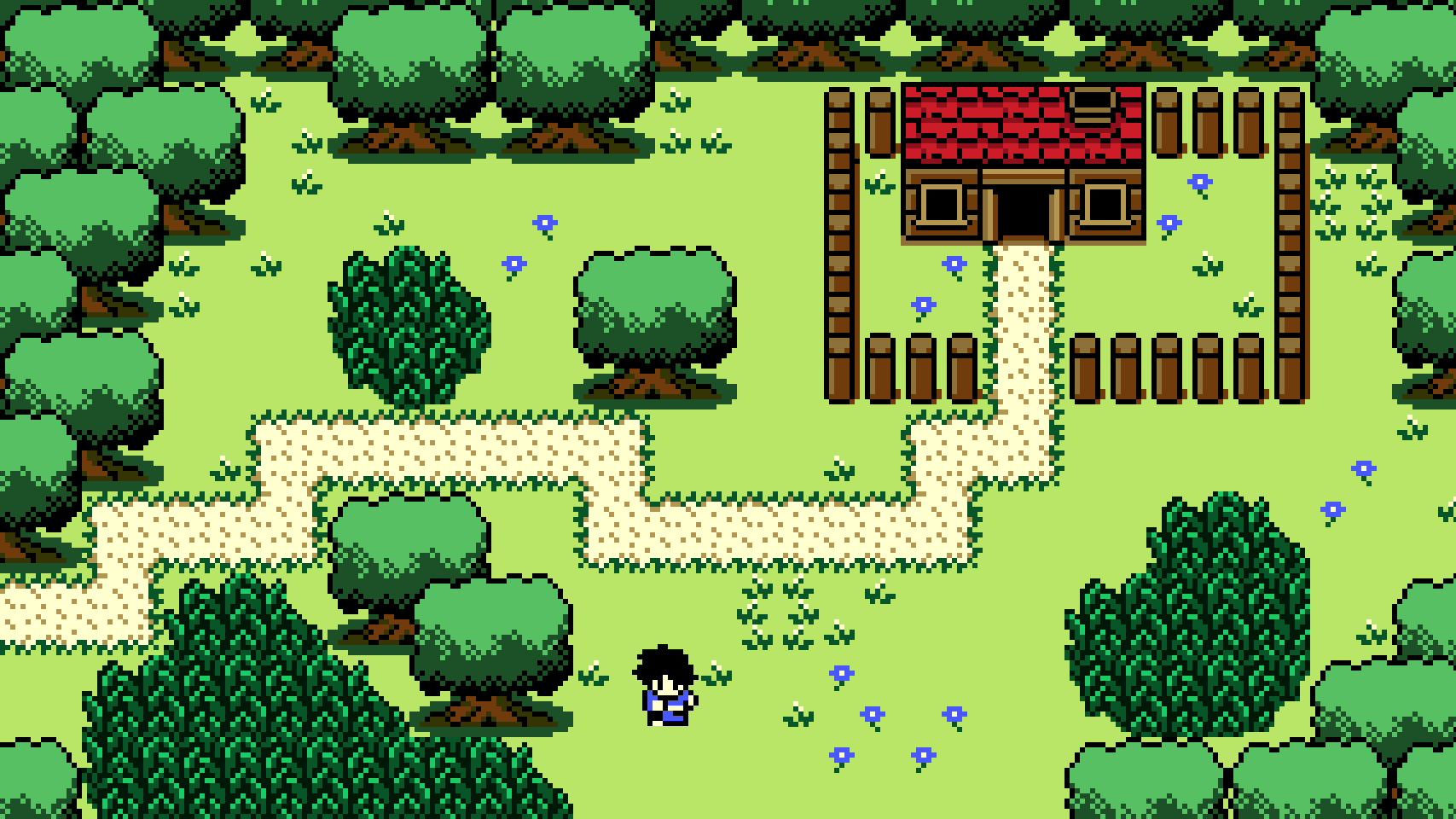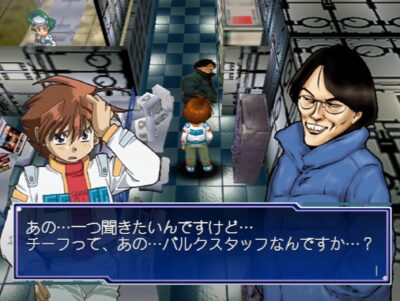
In Wireframe issue nine, we looked at how early entries in the Legend of Zelda series have inspired a generation of indie developers to make top-down adventure games of their own. And straight from Dallas, Texas, here comes a particularly charming Zelda-like: The Waking Cloak. It’s the work-in-progress of Daniel Müller who, over the past four years, has spent his spare between working as a software engineer on constructing a sprawling pixel fantasy world.
Fans of the Game Boy Color will probably recognise the colour palette right away: The Waking Cloak, with its mysterious island setting and trap-filled dungeons is, Müller says, a love letter to the happy hours he spent playing Zelda games as a child.
“The project was born back in 2015,” Müller tells us. “One of my brothers was living with us at the time, and I still vividly remember coming into the living room and noticing him playing The Legend of Zelda: Oracle of Seasons on his 3DS. I watched for a few minutes, and then it was like I’d been struck over the head: I could make a game like that. The feeling was honestly overwhelming.”

The Waking Cloak’s pixel art and palette are heavily inspired by the Game Boy Color.
Seeing Oracle of Seasons again triggered something in Müller’s mind: he’d long dreamed of making an adventure game of his own – so, he thought, “Why not actually go for it?” With the help of his brother, Müller spent several weeks planning out the bare bones of what would become The Waking Cloak: the story of a young urchin whose ship is wrecked, leaving him trapped on an unfamiliar island; the monsters and mysteries; the titular waking cloak – a garment that allows the wearer to travel between night and day.
“The project is really my love letter to my childhood, gaming on my hot pink Game Boy Color,” Müller says. “I had so many adventures on that. That’s the system I remember most fondly, and I’d love to recapture that same essence in The Waking Cloak.”
Müller has a solid technical background, including a degree in computer science and a day job in .NET web development; in terms of game design, though, he’s mainly self-taught. He’s been editing levels in things like LittleBigPlanet and making maps in Age of Empires 2 for years, and more recently, he’s given himself a crash course in sprite design as he’s gone through the process of making his first full game.

“I’m self-taught in art,” Daniel says of learning how to draw sprites. “It’s just a lot of practicing and getting feedback.”
“Building stuff and watching people play It is a great learning experience,” Müller says of his learning experience with LittleBigPlanet and ModNation Racers. “If you’re gravitating towards creative games – level editors, modding, and so on – feed that creativity. I didn’t learn ‘real’ programming until college, but I learned basic programming logic from LittleBigPlanet.”
When it came to making The Waking Cloak, Miller’s used GameMaker Studio 2 as its engine, and heartily recommends Aseprite for designing the graphics (“It’s an amazing tool for drawing and animating pixel art, and I’ve found it really intuitive,” he enthuses). When it comes to laying out his overworld maps and dungeons, though, Miller often turns to more traditional tools: a pencil and paper.
“When designing a dungeon, my recent process is to start with brainstorming ideas and rooms, and use those to sketch out a very tiny version of the dungeon a few times,” Miller says. “I did this on a sticky note! Then I sketch a bigger version on full-sized paper. After that, I move to graph paper for the trickier puzzles. Graph paper is a life saver. This has worked so much better than my previous process, which was to try to just build the dungeon map digitally from scratch. That was just way too overwhelming.”
As with so many other solo developers we’ve spoken to over the past few months, Müller’s found that one of the biggest challenges is fitting his game around all the other demands of everyday life. The Waking Cloak has gradually progressed through lunch breaks at work, or an odd hour in front of the television each evening.
“That fragmented working style means a feature that takes a normal developer a day to implement might take me a week instead,” Müller explains. “I have to really make sure I keep track of all my tasks and take lots of notes, since there’s no telling how long it’ll be between coding sessions.”
What’s clear is that The Waking Cloak isn’t lacking in ambition – the pixel graphics may hint at a small, intimate take on the Zelda series, but Müller tells us that its play area is actually larger than the Game Boy Color adventures it’s inspired by: the overworld map is divided up into ten or so areas, and then there are dungeons, as well as “some mini-dungeons, lots of caves and hidey holes, and a town or two.”

Daniel often favours a pencil and paper for coming up with early ideas – assuming Momo the cat will let him.
“There’s still plenty of room for cutting if it ends up feeling too big or bloated,” Müller says, “but at its current size, it’s bigger than the Game Boy Color Zelda titles. They had an overworld formed of 14×14 rooms, or 196 rooms total (this doesn’t include dungeons or interiors). The Waking Cloak is not only 16×16, but the rooms themselves are twice the width, since we’re widescreen these days.”
Müller doesn’t yet have a release date in mind for The Waking Cloak; rather than exhausting himself by trying to hit a deadline, he says he’s taking a “done when it’s done” approach: “Because it’s a hobby and not my family’s livelihood,” he explains, “I have room to do this.”
All the same, Müller’s keeping himself motivated with milestones to work towards, including plans for a playable demo; once that’s done, he’ll have a better idea of how much more work the game will need before it’s complete. Then there are his plans for release: The Waking Cloak will appear on itch.io and Steam for PC, and he hopes to port the game to Mac and Linux; after that, there’s the allure of the Nintendo Switch.
“You have no idea what that would mean to me,” he says. “I think holding my Switch with The Waking Cloak on it just might be enough to make me cry! That would make the whole thing come full circle for me, I think.”
Getting started
“The best way to learn programming is to have a project you really want to do, and then find the best tool to do that in,” advises Müller. “A lot of people say to start really small, and that can be valuable, but if you have no drive to make something small it’ll make it that much harder to learn. For game development, maybe start by modding, or by picking something like Unity, since it’s free and has a huge community surrounding it. Follow along with tutorials, ask lots of questions, tweak things and see what happens, google everything. Watch game design videos on YouTube like Game Maker’s Toolkit (His Boss Keys series has been incredibly helpful for me). Get people to play your stuff, note where they struggle, talk about what they like, and keep improving.”





